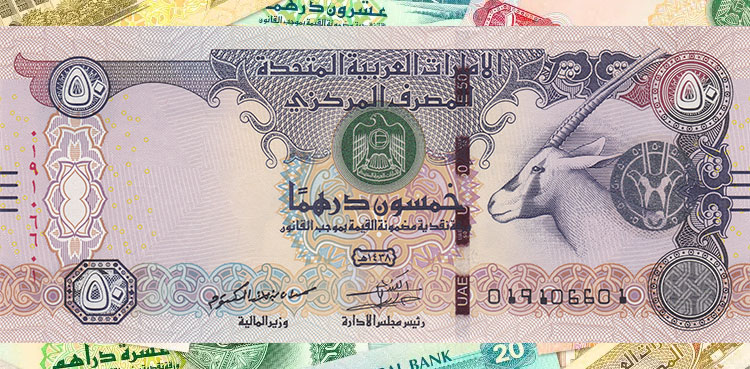Karachi, June 3, 2025 – Recent figures in the currency market show that the exchange rate of the UAE Dirham (AED) is at 76.44 PKR against the Pakistani Rupee (PKR).
This stability comes after a peaceful time in the AED and PKR exchange rates, supported by steady remittances and good economic conditions in the UAE as well as Pakistan.
Understanding the AED-PKR Exchange Rate
The UAE Dirham’s exchange rate with the Pakistani Rupee is influenced by market forces and the actions of central banks. Since 1997, the Dirham has been pegged to the US Dollar at approximately 3.67 AED/USD, a policy by the UAE Central Bank. This fixed exchange rate helps preserve the Dirham’s parity with the US Dollar, which is backed by the oil-based economy of the UAE and its push for diversification into other industries.
Conversely, the value of the PKR is regulated under a floating exchange rate system. Our research indicates that it is primarily determined by the demand and supply for foreign currencies. The State Bank of Pakistan periodically intervenes to mitigate volatility. Elements such as remittances, foreign reserves, trade balance, and inflation—including the notable $3.1 billion remitted from the UAE in February 2025—play key roles in influencing the PKR’s value.
The interbank and open market rates set the daily AED to PKR conversion rates. The buying rate is presently fixed at 76.67 PKR, while the selling rate by banks and exchange companies is around 77.25 PKR, which might also include a tiny extra charge for sellers. This information is revised daily at 8:00 AM Pakistan Standard Time and can shift during the course of a day depending upon market forces.
Effects of Stability
The fixed rate of 76.44 PKR of the UAE Dirham has considerable implications for Pakistan and over two million Pakistani expats residing in the UAE. This fixed rate gives them confidence when transferring remittances to their families back home to help household businesses in Pakistan. In addition, it supports trading companies engaged in importing and exporting items like food, apparel, and building materials between Pakistan and the UAE, hence eliminating risks associated with currency volatility.
For Pakistan’s economy, a stable exchange rate between the AED and PKR enables effective remittances that are essential for supporting foreign exchange reserves. Experts argue that this stability is brought about by conservative trading behavior, solid reserves, and the absence of speculative pressures. The UAE is a critical economic partner for Pakistan, with remittances helping stabilize the PKR. The managed floating system of the PKR, however, exposes it to domestic factors like inflation and trade deficits. Currency experts recommend that although the exchange rate of AED-PKR is stable at present, market participants need to be on guard for the possibility of volatility generated by external developments in the form of oil price fluctuations and geopolitical tensions that can affect the value of the US Dollar and, in turn, the Dirham.
Overview of AED and PKR
The UAE Dirham was introduced in 1973 as the official currency of the UAE to take the place of the Qatar and Dubai Riyal. It is managed and issued by the UAE Central Bank and is subdivided into 100 fils. It is abbreviated as AED, and the peg against the US Dollar is maintained by the UAE’s oil reserves, sound fiscal management, and status as an international trade hub. The Dirham is common to all seven emirates, particularly in big cities like Dubai and Abu Dhabi, and tourist areas.
The Pakistani Rupee, which entered circulation in 1947, is the country’s official currency. It is controlled by the State Bank of Pakistan.


Leave a Comment